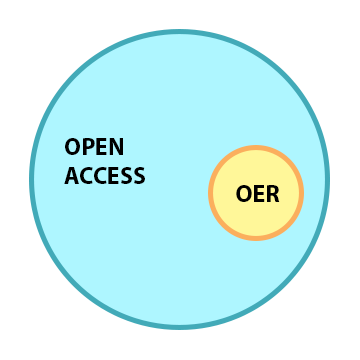
The short answer is no. The longer answer is that Open Educational Resources (OER) represent a subset of Open Access (OA) material. OER are always Open Access, but not all OA materials are considered OER.
Open Access materials incorporate all types of information that are freely available to the public. This can include pre- and post-prints of scholarly journal articles, data that has been shared widely, and images whose copyright has expired. These materials can be used as provided but do not include permissions to change the content.
Open Educational Resources, on the other hand, are instructional materials that are freely available but that can also be reused, revised, remixed, and redistributed due to the author’s/creator’s pre-selection of a creative commons license. This license allows other interested parties to use the resource as they wish, but places stipulations on those permissions like attribution, share alike, and non-commercial.
The beauty of Open Educational Resources is that the original may contain portions of content that another educator may wish to use, but the entirety of that OER may not be a perfect fit. The ascribed creative commons license saves that educator the time from having to ask permission to mash up the interesting content with other pieces of information that may be more relevant. Adding in local examples can help emphasize a particular concept, or inserting images to existing text can bring a visual element to the learning. All of this is possible with OER, making the materials “living documents” that can be morphed and updated through time, with the basic limitation that the original (and subsequent) authors be credited for their work.
For more information, please refer to SPARC’s page on Open Education.


